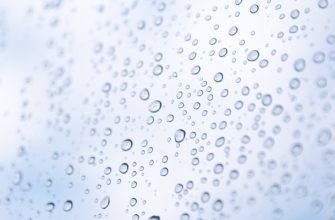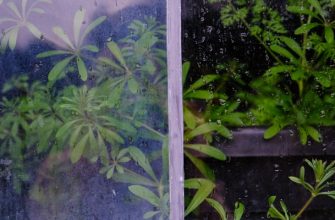- Revolutionizing Indoor Air Quality: The Science Behind Air Purification Technologies
- The Benefits of Clean Air: How Advanced Filtration Systems Can Enhance Your Home
- Smart Solutions for Fresh Air: Integrating Technology into Your Home Environment
- From HEPA Filters to UV Light: Exploring Various Air Purification Methods
- Creating a Healthier Living Space: The Role of Air Purifiers in Modern Homes
- Future Trends in Air Cleaning Technology: What to Expect in Home Air Quality Solutions
Revolutionizing Indoor Air Quality: The Science Behind Air Purification Technologies
Indoor air quality is a crucial factor that significantly impacts health and well-being. With increasing awareness of air pollution, the demand for air purification technologies is rising. These innovations are designed to remove contaminants from the air, creating a cleaner and healthier living environment.
Modern air purification technologies utilize various methods to enhance indoor air quality. Some of the most effective techniques include:
- HEPA Filtration: High-Efficiency Particulate Air (HEPA) filters are known for their ability to capture 99.97% of particles, including dust, pollen, and pet dander, making them a popular choice for air purifiers.
- Activated Carbon: This technology uses activated carbon to adsorb odors and volatile organic compounds (VOCs), which are harmful chemicals often found in household products.
- UV-C Light: Ultraviolet light is effective in neutralizing bacteria and viruses, contributing to better air quality by reducing biological contaminants.
- Ionic Purification: Ionizers release charged ions into the air, which attach to particles, causing them to clump together and fall out of the air, thus improving indoor air conditions.
Each of these methods plays a vital role in enhancing the effectiveness of air purification systems. By combining multiple technologies, air purifiers can address a wide range of pollutants, ensuring a safer indoor environment.
In addition to technological advancements, understanding the science behind these purification methods empowers homeowners to make informed choices. Selecting the right air purification system can significantly improve indoor air quality, leading to a healthier living space.
Investing in advanced air purification technologies is not just about comfort; it is a proactive approach to safeguarding health and well-being. As more people recognize the importance of clean air, the evolution of air purification systems continues to revolutionize indoor environments.
The Benefits of Clean Air: How Advanced Filtration Systems Can Enhance Your Home
Clean air is essential for maintaining a healthy living environment. Advanced filtration systems play a crucial role in enhancing indoor air quality, ensuring that homes are free from harmful pollutants and allergens. These systems effectively remove contaminants, providing numerous benefits for residents.
- Improved Health: Clean air contributes to better respiratory health, reducing the risk of asthma and allergies. A well-functioning filtration system helps eliminate particulates that can trigger health issues.
- Enhanced Comfort: Advanced filtration systems create a more comfortable indoor atmosphere by removing odors and maintaining optimal humidity levels, making living spaces more pleasant.
- Energy Efficiency: When air is clean and free from dust and debris, heating and cooling systems operate more efficiently, leading to lower energy bills and prolonged equipment life.
- Better Sleep Quality: Cleaner air can improve sleep by reducing irritants that disrupt rest, allowing residents to enjoy a more rejuvenating sleep cycle.
- Protection of Belongings: By minimizing dust and pollutants, advanced filtration systems help protect furniture and appliances from damage, thus prolonging their lifespan.
Implementing advanced filtration systems not only promotes clean air but significantly enhances the overall quality of life within a home. Investing in such technology is a proactive step towards ensuring a healthier and more enjoyable living environment.
Smart Solutions for Fresh Air: Integrating Technology into Your Home Environment
Modern technologies play a key role in improving indoor air quality. Effective air purification methods—such as smart systems, automated devices, and the latest filtration technologies—can significantly increase comfort and health levels in living spaces.
- Smart Air Purifiers: These devices use sensors to detect pollution levels and automatically adjust their operation. They can capture allergens, dust, and even odors, ensuring air cleanliness.
- Ventilation Systems: Integrating modern ventilation systems enables efficient exchange of fresh air with the indoors. Smart fans can operate based on carbon dioxide and humidity levels, helping create a comfortable indoor climate.
- HEPA Filters: High-efficiency HEPA filters capture up to 99.97% of particles as small as 0.3 microns. They are ideal for removing dust, pollen, and other allergens, making them indispensable in air purification systems.
- Ionizers: These devices charge airborne particles, causing them to stick to surfaces, which reduces the amount of allergens and pollutants in the room.
Integrating technologies into the air purification system not only makes the home safer but also creates a comfortable living environment. Using automated solutions minimizes the effort required to maintain air cleanliness while ensuring high air quality. Thus, the introduction of modern purification technologies can dramatically change the perception of the home environment.
From HEPA Filters to UV Light: Exploring Various Air Purification Methods
Air purification has become an essential aspect of maintaining a healthy indoor environment. Various methods of air purification are available, each employing unique technologies to enhance air quality. Understanding these methods can help individuals choose the best system for their home.
- HEPA Filters: High-Efficiency Particulate Air (HEPA) filters are renowned for their ability to capture 99.97% of particles that are 0.3 microns or larger. These filters effectively remove dust, pollen, pet dander, and other allergens from the air, making them a popular choice for households concerned with allergy management.
- Activated Carbon Filters: Activated carbon filters work by adsorbing volatile organic compounds (VOCs), odors, and gases. This method is particularly effective for eliminating smoke, cooking smells, and chemical fumes, thereby improving overall air quality.
- UV Light Purification: Ultraviolet (UV) light purification systems utilize UV-C light to kill bacteria, viruses, and mold spores present in the air. This method is ideal for preventing the spread of airborne illnesses, making it a valuable addition to any air purification system.
- Ionic Purifiers: Ionic air purifiers release negatively charged ions into the air, which attach to positively charged particles, such as dust and allergens, causing them to clump together and fall to the ground. This technology can significantly reduce airborne pollutants, although regular cleaning of surfaces is necessary to maintain effectiveness.
- Ozone Generators: Ozone generators produce ozone, which can neutralize odors and kill some bacteria. However, caution is advised, as ozone can be harmful to respiratory health at high levels, making this method less suitable for occupied spaces.
Each air purification method has its strengths and weaknesses, making it crucial to evaluate individual needs and circumstances. Selecting the right air purification technology can lead to significant improvements in indoor air quality, contributing to a healthier living environment.
Creating a Healthier Living Space: The Role of Air Purifiers in Modern Homes
Creating a healthier living space is essential for overall well-being, and air purifiers play a crucial role in achieving this goal. These modern devices are designed to improve indoor air quality by removing pollutants and allergens, making homes safer and more comfortable. Air purifiers utilize advanced filtration technologies to eliminate dust, pet dander, smoke, and other harmful particles.
When considering the benefits of air purifiers, it’s important to understand how they function. Most air purifiers operate using a combination of HEPA filters, activated carbon filters, and UV light technology. This multi-layered approach ensures the efficient capture of a wide range of airborne contaminants, significantly enhancing the air quality in living spaces.
- HEPA Filters: These filters can trap 99.97% of particles, including pollen and mold spores.
- Activated Carbon Filters: These filters absorb odors and volatile organic compounds (VOCs), contributing to a fresher environment.
- UV Light Technology: This feature helps to neutralize bacteria and viruses, further purifying the air.
The presence of an air purifier in a home can lead to noticeable improvements in health and comfort. Many users report fewer allergy symptoms, reduced respiratory issues, and enhanced overall quality of life. Additionally, air purifiers are particularly beneficial in urban areas where outdoor pollution can infiltrate indoor spaces, making them an essential addition to modern living.
In conclusion, incorporating air purifiers into a home not only enhances air quality but also promotes a healthier living environment. As awareness of indoor air pollution grows, the role of air purifiers in maintaining a clean and safe home becomes increasingly important.
Future Trends in Air Cleaning Technology: What to Expect in Home Air Quality Solutions
With each passing year, air purification technologies are becoming increasingly innovative, contributing to improved air quality at home. In the coming years, several interesting trends in air purification are expected, which could significantly change the approach to creating a comfortable and safe home environment.
- Smart Devices: Modern air purifiers will be integrated with smart home systems, allowing users to control and monitor air quality in real time via mobile applications.
- Eco-friendly Technologies: Growing interest in ecology will lead to the development of purifiers that use natural and environmentally safe materials, making them more attractive to consumers.
- Multifunctional Systems: Future air purification solutions are expected to combine filtration, humidification, and even disinfection functions, providing users with a comprehensive solution for improving air quality.
- Use of AI: Artificial intelligence will be actively used to optimize the operation of air purifiers, ensuring maximum efficiency and adaptation to changes in the environment.
- Nanotechnologies: The introduction of nanomaterials into filters will open up new possibilities for removing the smallest particles and allergens, further improving indoor air quality.
These trends in air purification technology will contribute not only to better health for residents but also to the creation of a more comfortable and safe environment. Maintaining clean air will become an important aspect of the modern lifestyle, with a focus on innovative and effective solutions.








